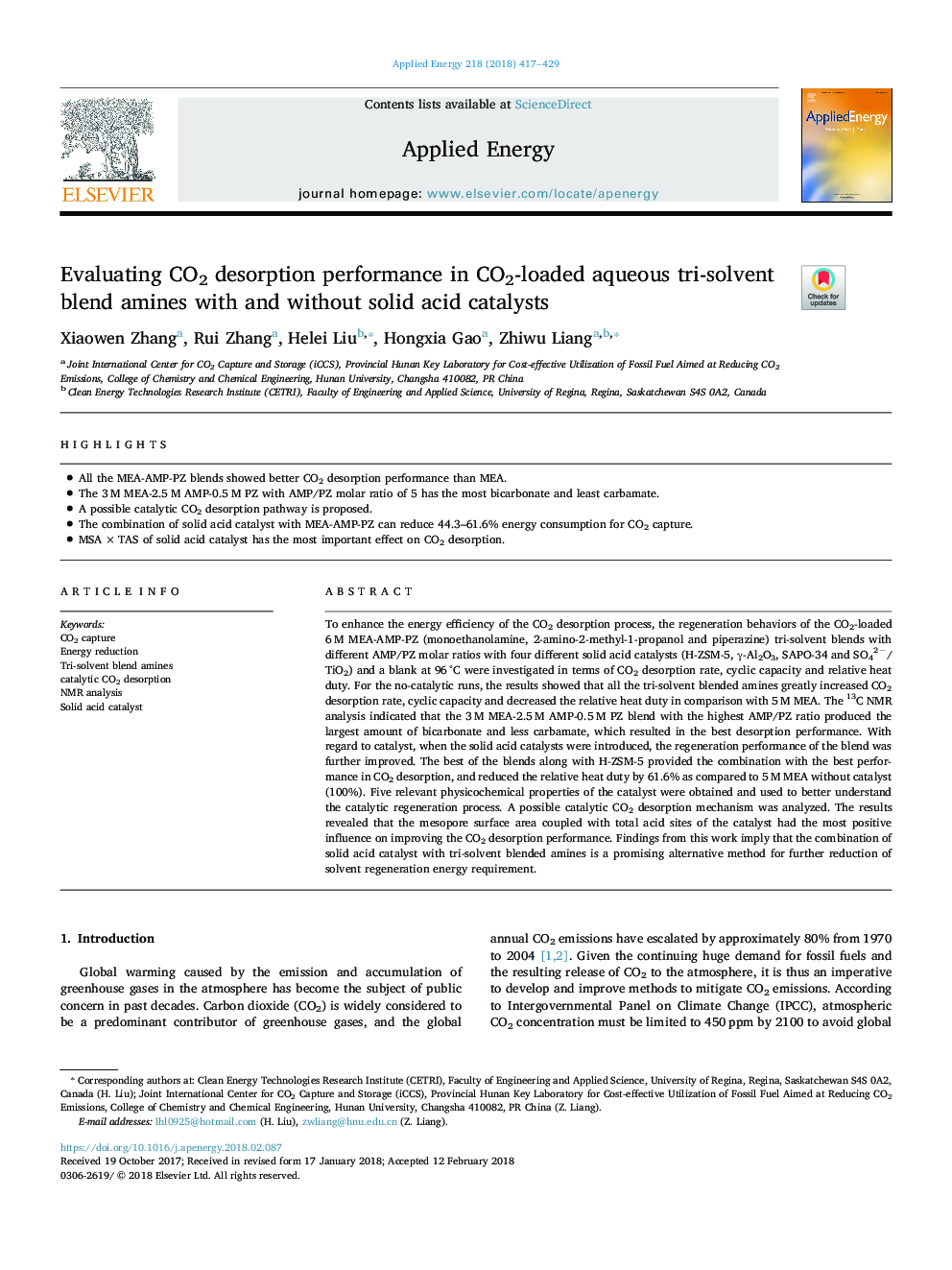| Article ID | Journal | Published Year | Pages | File Type |
|---|---|---|---|---|
| 6680434 | Applied Energy | 2018 | 13 Pages |
Abstract
To enhance the energy efficiency of the CO2 desorption process, the regeneration behaviors of the CO2-loaded 6â¯M MEA-AMP-PZ (monoethanolamine, 2-amino-2-methyl-1-propanol and piperazine) tri-solvent blends with different AMP/PZ molar ratios with four different solid acid catalysts (H-ZSM-5, γ-Al2O3, SAPO-34 and SO42â/TiO2) and a blank at 96â¯Â°C were investigated in terms of CO2 desorption rate, cyclic capacity and relative heat duty. For the no-catalytic runs, the results showed that all the tri-solvent blended amines greatly increased CO2 desorption rate, cyclic capacity and decreased the relative heat duty in comparison with 5â¯M MEA. The 13C NMR analysis indicated that the 3â¯M MEA-2.5â¯M AMP-0.5â¯M PZ blend with the highest AMP/PZ ratio produced the largest amount of bicarbonate and less carbamate, which resulted in the best desorption performance. With regard to catalyst, when the solid acid catalysts were introduced, the regeneration performance of the blend was further improved. The best of the blends along with H-ZSM-5 provided the combination with the best performance in CO2 desorption, and reduced the relative heat duty by 61.6% as compared to 5â¯M MEA without catalyst (100%). Five relevant physicochemical properties of the catalyst were obtained and used to better understand the catalytic regeneration process. A possible catalytic CO2 desorption mechanism was analyzed. The results revealed that the mesopore surface area coupled with total acid sites of the catalyst had the most positive influence on improving the CO2 desorption performance. Findings from this work imply that the combination of solid acid catalyst with tri-solvent blended amines is a promising alternative method for further reduction of solvent regeneration energy requirement.
Related Topics
Physical Sciences and Engineering
Energy
Energy Engineering and Power Technology
Authors
Xiaowen Zhang, Rui Zhang, Helei Liu, Hongxia Gao, Zhiwu Liang,
